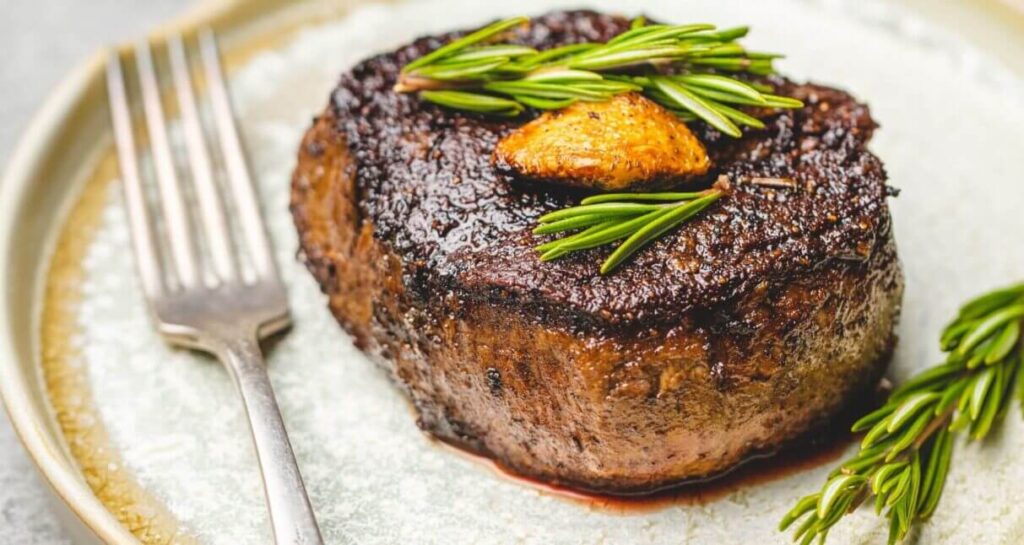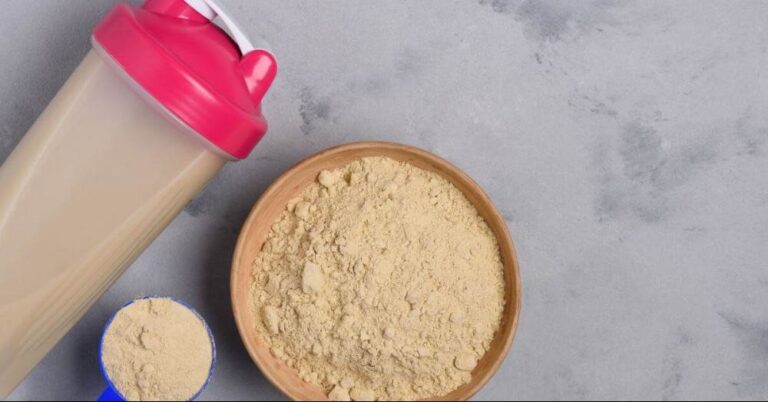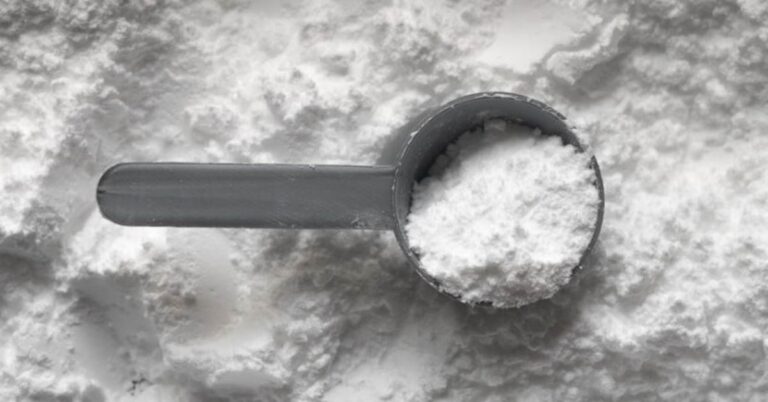You probably already know that creatine is one of the most popular sports supplements around. This natural compound is commonly taken to enhance strength, power, muscle mass, exercise performance and even cognitive function. But what exactly is creatine and how does the body make and use it? Let’s start with the basics.
Eggs DO contain creatine, albeit in relatively trace amounts. You’d need around 25 eggs per day to get the same amount of creatine that 1kg of cooked steak can provide. Red meat, poultry and fish are much better sources of creatine than eggs and all contribute to a more balanced diet. Vegans and vegetarians can also increase their natural creatine synthesis by consuming foods high in the 3 amino acids that form creating naturally – Arginine, Glycine, and Methionine
What Is Creatine and How Is It Naturally Produced?
Creatine is a natural compound found in the human body that provides energy to the brain and muscle cells.
It is produced in the kidneys and liver from amino acids like glycine, arginine, and methionine. This production involves the combination of arginine and glycine to create guanidinoacetate, which is then modified by methionine to form creatine.
Afterwards, creatine is distributed throughout the body via the bloodstream for various functions.
What Are Some Functions of Creatine in the Body?
Some key functions of creatine include:
- Providing rapid energy to all cells in the body by regenerating ATP (adenosine triphosphate – the primary energy source of the cells in the body)
- Increasing power output and strength, especially in short-duration, high-intensity exercise
- Supporting growth and maintenance of lean muscle mass
- Reducing muscle fatigue and damage during exercise
- Aiding muscle recovery after strenuous workouts
- Boosting neural function and assisting energy metabolism in the brain
- Supporting heart health by providing energy to cardiac tissue
- Helping maintain body fluid balance and pH levels
Where Is the Majority of Creatine Stored in the Body?
Approximately 95% of the total creatine content in the body is stored in skeletal muscle. The remaining 5% is stored in other tissues like the brain, heart, testes, and red blood cells. The high concentration of creatine stored in muscle tissue acts as an immediate energy reserve, allowing rapid replenishment of ATP.
How Does Creatine Aid in Reducing Muscle Fatigue?
During intense physical activity, ATP stores in muscles get rapidly depleted. Creatine helps regenerate ATP from ADP (adenosine diphosphate) to delay fatigue and allow continued muscular contraction. This ATP recycling effect of creatine enhances power output, endurance, and overall exercise capacity.
So that’s the basics of what creatine is and what it does. Let’s look at how much creatine you can get from eggs and other foods.
Do Eggs Contain Creatine?
The amount of creatine produced naturally in the body is around 1-2g per day. This is usually not sufficient to meet the increased demands of athletes or any explosive exercise such as lifting weights.
It is pretty common to use creatine supplements to increase the total amount available in the body but some of the food we eat also contains creatine.
Foods like meat, fish and poultry probably come to mind first. But eggs do in fact contain small amounts of creatine as well.
The exact creatine content of eggs can vary, but most sources estimate around 0.1-0.3 grams of creatine per 100g. So for example, if we take the average of 0.2g creatine per 100g (roughly around 1.5 eggs), this means you’d need to eat around 25 eggs to get just 5 grams of creatine.
That is a massive 1950 calories just from eggs! I’m not sure I could eat that many eggs in a week, let alone a day!
Clearly eggs are a pretty inefficient source of creatine compared to supplements or other creatine-rich foods. That said, regularly eating eggs can still contribute a small useful amount to your overall daily creatine intake as well as providing protein for muscle growth and repair and other nutrients.
Some pros and cons of obtaining creatine from eggs include:
Pros:
- Whole food source provides a natural variety of nutrients
- Easy to cook and incorporate into meals
Cons:
- Need very high egg intake to meet creatine goals
- Cholesterol content may be concern if over-consumed
- Not practical as a primary creatine source for performance goals
So instead, let’s explore the top dietary sources highest in creatine, that you can easily work into your diet…
Top 5 Foods Highest in Creatine

Beef
Of all whole food sources, beef tops the charts for creatine content. Beef contains 2-5 grams of creatine per 1 kg cooked.
For reference, a 6oz cooked steak contains just under 1g of creatine. Grass-fed beef tends to be slightly higher than conventional due to differences in cattle diet and genetics.
Red meat not only provides the most concentrated source of dietary creatine, but also contains high quality protein and iron which can support muscle growth and performance. Plus it is full of vitamins and minerals such as vitamin B6, vitamin B12, zinc, selenium, iron, niacin and phosphorus.
Fish
Cold water fatty fish are also excellent sources of dietary creatine, in addition to their many other nutritional benefits.
Fish highest in creatine include:
- Salmon – contains 2.66 to 4.5 grams of creatine per kilogram of meat depending on if it is farmed or wild salmon.
- Herring – contains 6.5 to 10 grams of creatine per kilogram of meat.
- Cod – contains 3 grams of creatine per kilogram of meat.
- Tuna – contains 4.0 grams of creatine per kilogram of meat.
The higher fat content of these oily fish contributes to their generous creatine content. So be sure to keep the skin on when cooking!
Chicken and Turkey

Poultry contains less creatine than red meat gram for gram, but can still be a decent source when eaten regularly.
Chicken and turkey have approximately 2-2.5g creatine per 1kg cooked. The legs and thighs are slightly higher than breast meat.
When possible, choose thighs over breast and eat poultry skin-on and bone-in for maximum creatine intake.
Pork
In addition to beef, pork can also provide useful amounts of dietary creatine. There is around 5g of creatine per 1kg of cooked pork.
Pork comes in many variations including pork chops, bacon, pork loin or ham.
This makes it a very versatile food when trying to supplement creatine in your diet as it can be consumed in different forms throughout the day.
Dairy Products
While milk contains minimal creatine, around 0.1g/kg, some cheeses are excellent sources.
Hard aged cheeses like parmesan , Romano, gruyere, and swiss provide 2-3g creatine per 100g serving. Cottage cheese and yoghurt also supply around 1g per serving.
VIDEO: 10 Natural Foods Containing Creatine
What Are the Dietary Needs for Creatine in Adults?
The average sedentary adult requires around 1-2 grams of creatine per day to maintain normal stores, which can typically be met through the naturally produced creatine and diet.
For athletes or highly active individuals, dietary requirements jump to around 3-5 grams daily due to increased muscle creatine use.
Some guidelines suggest active adults consume 0.03 grams of supplemental creatine per kilogram of body weight daily, in addition to dietary intake. For a 70kg individual, that equals around 2g of supplemental creatine.
Why Might Supplementation Be Necessary for Creatine?
For those with high creatine needs like athletes or bodybuilders, dietary sources may not be enough to reach optimal intakes of 4-5g daily.
Vegans also often require creatine supplements since they avoid meat and dairy. Additionally, supplements allow precise dosing and can be more convenient than continually eating creatine-rich foods.
There is good news for vegans and vegetarians who can’t get creatine from their diet and don’t want to use supplements – the body can synthesise creatine itself. In these circumstances, there are a few foods that will support creatine synthesis.
These foods contain the 3 amino acids used to create creatine which are arginine, glycine and methionine.
Foods High in Arginine, Glycine, and Methionine
| Arginine (g) | Glycine (g) | Methionine (g) | |
| Pumpkin Seeds | 6.9 | 2.8 | 0.8 |
| Sesame Seeds | 4.8 | 1.6 | 1.3 |
| Seaweed (Spirulina). | 4.6 | 3.5 | 1.3 |
| Soy Beans | 2.9 | 1.7 | 0.5 |
| White Beans | 1.2 | 0.7 | 0.2 |
| Walnuts | 2.7 | 1.0 | 0.3 |
| Almonds | 3.5 | 2.1 | 0.2 |
Supplements vs Diet: What’s the Best Source of Creatine?
Now that we’ve covered the top dietary sources, should you get your creatine solely from food or take supplements instead?
Each approach has pros and cons to consider:
Benefits of Creatine Supplements:
- Easier to get large doses quickly
- More convenience
- Generally more affordable
- Can follow proven cycling protocols
Benefits of Dietary Creatine Sources:
- Provides whole food nutrients
- No synthetic ingredients
- Helps promote an overall healthy diet
- Less risk of side effects
For most people looking to maximize performance and muscle-building, combining both dietary creatine and targeted supplementation is ideal.
Aim to get around 2-3g creatine daily from a combination of food sources like meat and fish. Then supplement with an additional 2-5g of pure creatine powder to achieve optimal intakes of 4-5g daily.
The Takeaway
While eggs do contain traces of creatine, they are far from an efficient source when aiming to optimize intake compared to red meat and poultry for example.
It is entirely possible to consume enough creatine from diet alone for a typical sedentary adult. However, increased strenuous activity would benefit from creatine supplementation too.
In terms of diet, focus on incorporating more high-creatine foods like beef, pork, fish and chicken into your regular diet.
When combined with creatine supplements, this can take your strength and performance goals to the next level.







